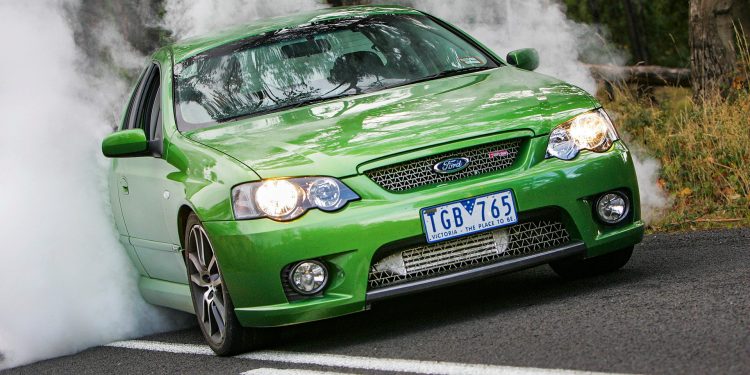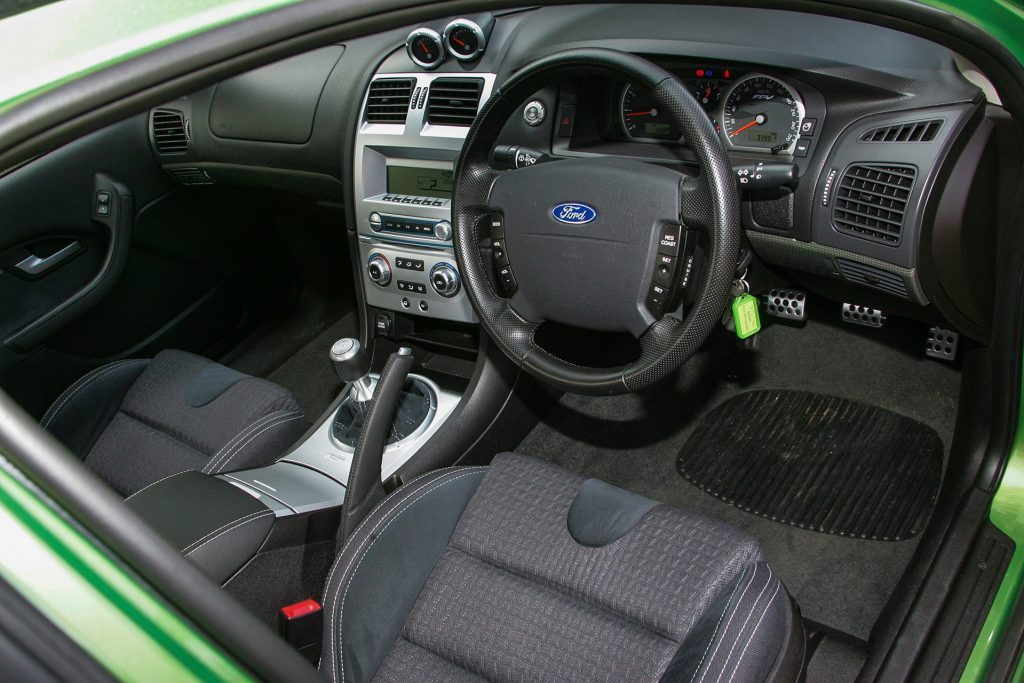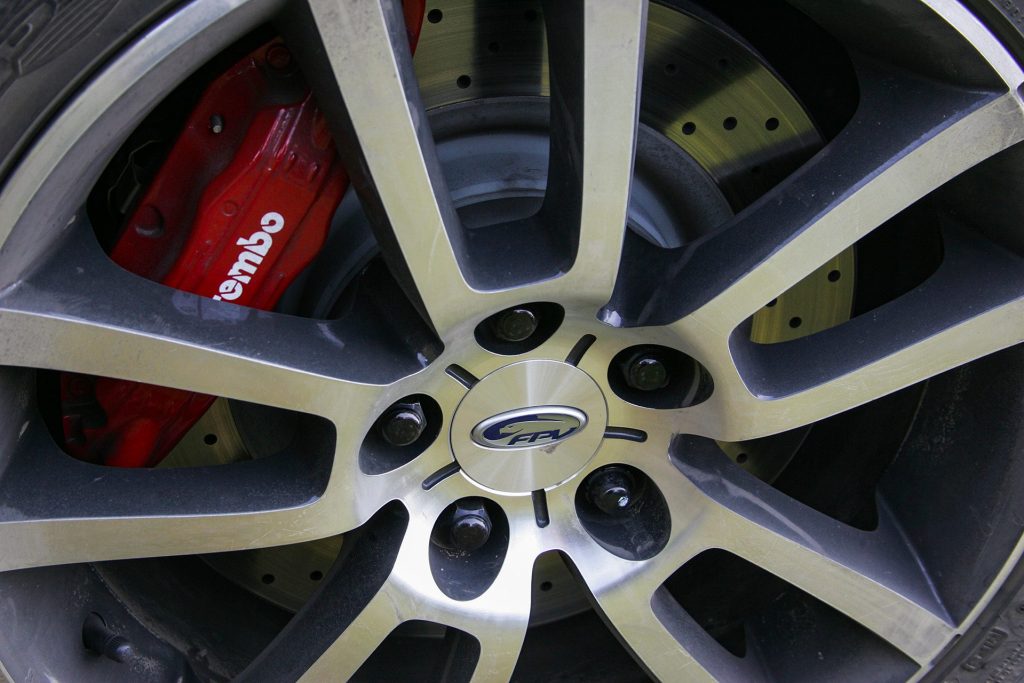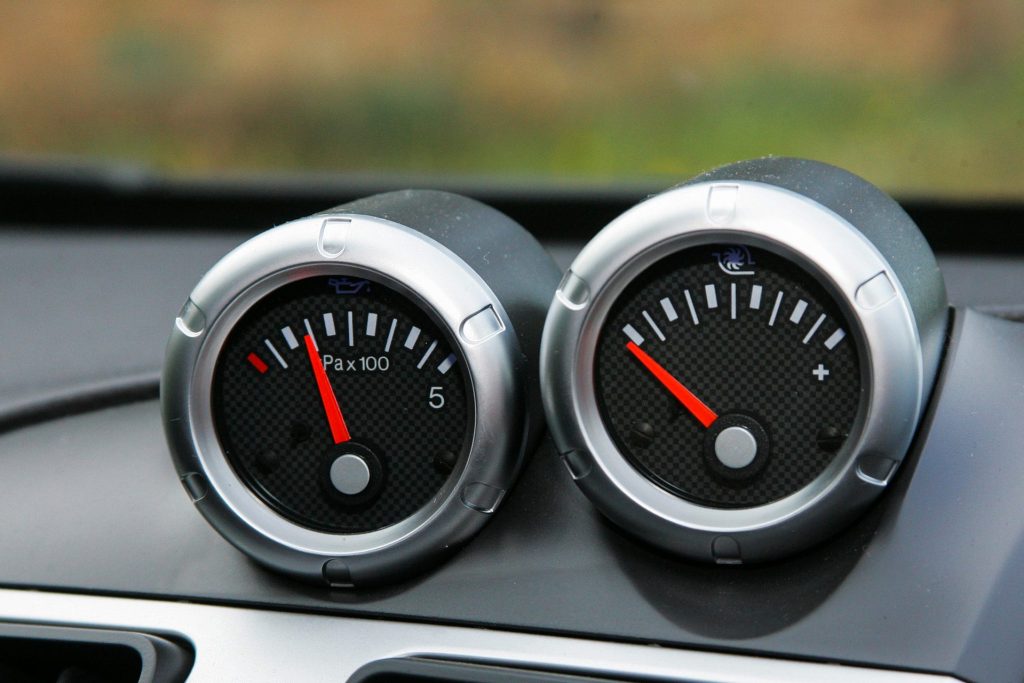2005 FPV F6 Tornado review
Words: Bruce Newton | Photos: Tom Gasnier
Ford’s fastest ute has an apt name: Tornado. For the working man’s FPV produces a prodigious amount of twisting force, which is another term for torque, grunt, mumbo and the ability to puff tyre smoke while loco-motoring.
We love our utes in Australia, no doubt about it. Big, hairy-chested beasts with enough room out back for the beer but none in the cabin for the sheila’s mates. Bewdy! Big bars, big wheels and big V8s. All good stuff for the larrikin country lad – or his city cousin – with a love for circle work. Bonza!
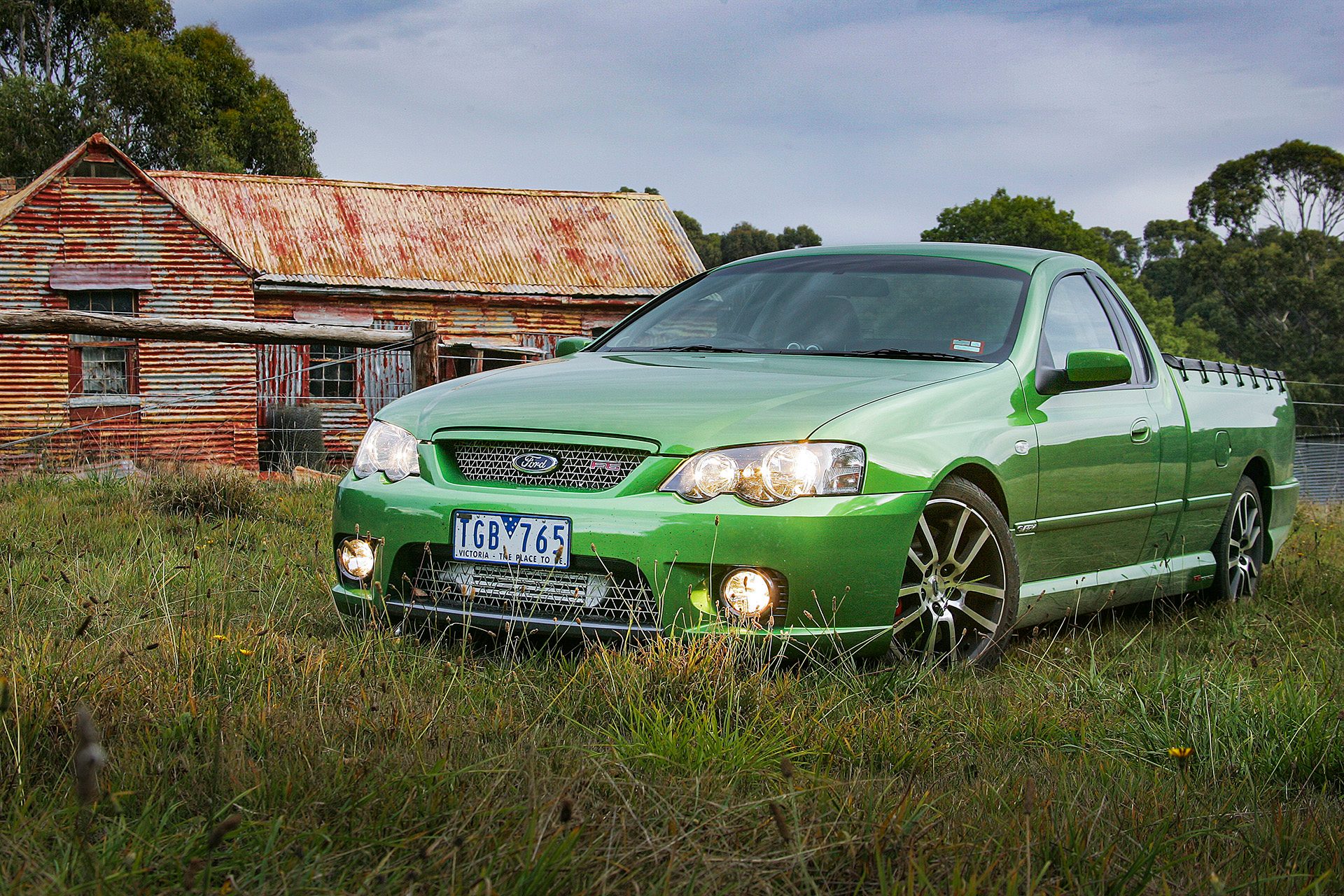
But now Ford Performance Vehicles has given the boys something to think about with the launch of the F6 Tornado, the two-door, two-seat spin-off of the Typhoon sedan. The tricky thing for the blokes at the pub to get to grips with when it comes to the Tornado is that it’s not V8-powered, instead lighting up its rear tyres courtesy of the same turbocharged 4.0 litre inline six as the Typhoon.
And as you can see from Tom’s pics, the Tornado’s rear rubber should be on the endangered-species list, such is the car’s love for wheel-spinning burn-outs. That’s a size 10 work boot to the orchestras for any cynic who dismisses the Tornado because it is powered by a ‘mere’ six. If you read our Typhoon first-drive impressions last November then you know the basics of the engine already and that there’s nothing ‘mere’ about it. A very close relation to the powerplant in the excellent Falcon XR6 Turbo, it’s been pumped up with an extra 30kW and 100Nm. That improvement is achieved by lifting the boost pressure of the turbocharger via a larger-capacity airbox and intercooler. Inside the cases there are heavy-duty con-rods and valve springs in the interests of durability.
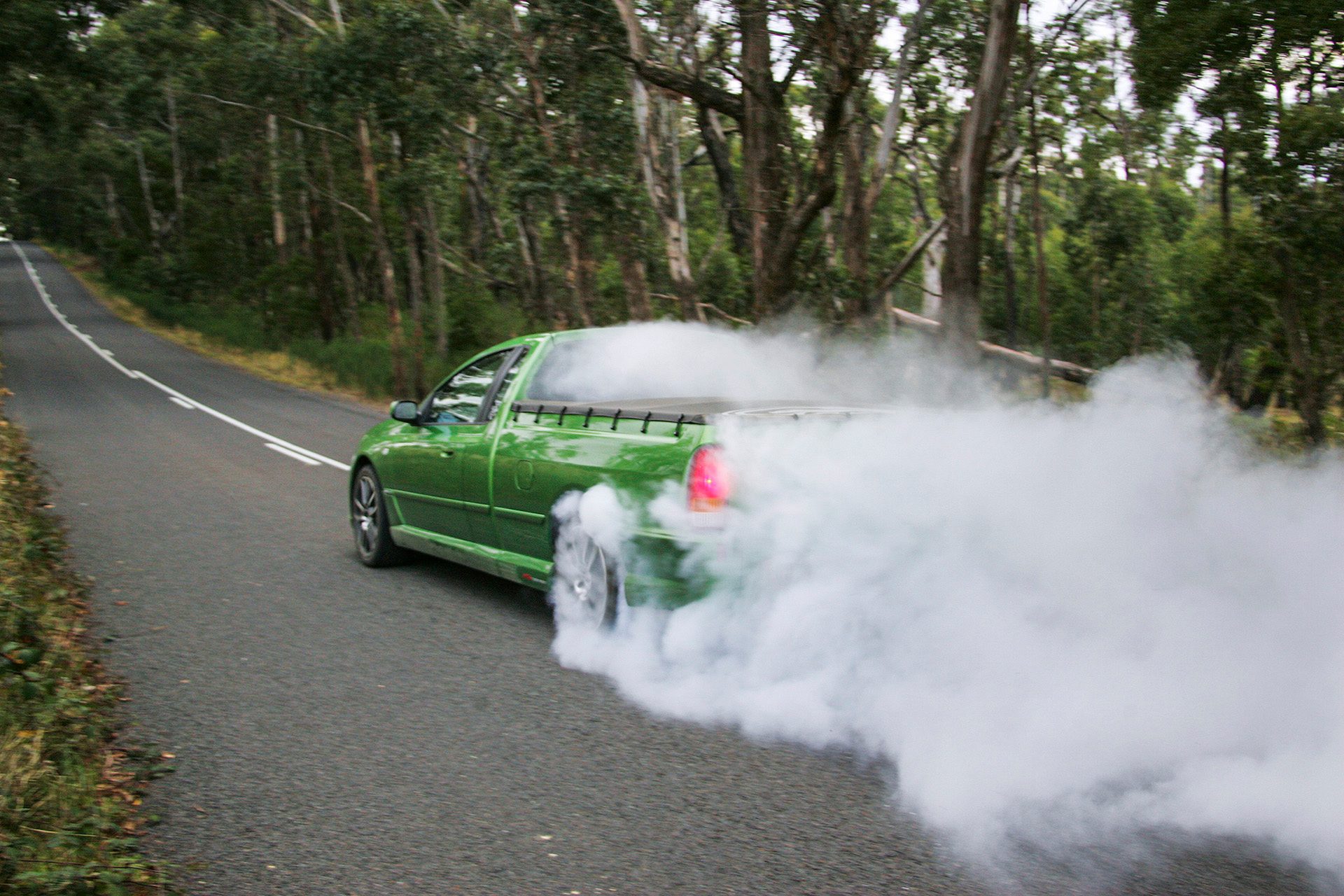
The power is reset at a sizeable 270kW at 5250rpm, but it’s the torque that attracts your attention, a giddy 550Nm between 2000rpm and 4250. That’s more pulling power than any other locally manufactured car, even outshining HSV’s 6.0 litre Z Series, which makes do with just 530Nm. Yeah, yeah, the Holden lovers will brag the HSV has more kilowatts – 297 of the bloody things – but as we all know, away from the drag strip and out in the real world, it’s the newton metres that count the most, giving the Typhoon – and now the Tornado – immense point-to-point ability.
But for FPV’s F6-powered cars, torque has been a double-edged sword. It’s at the very core of the much-publicised clutch failures that stopped Typhoon production and postponed the introduction of the Tornado. The story goes something like this: because the F6 engine produces so much torque, FPV realised a tougher clutch would have to be sourced than what was in the standard XR6T. The eventual choice was a hand-built 240mm twin-plate AP Racing clutch that is also employed in the Ford GT Supercar and Aston Martin DB9. The twin-plate design was selected for packaging and pedal weight over a single-plate clutch, and mated to a T56 Tremec six-speed manual gearbox. While the Tremec also came into service in the XR6T and XR8 at BA MkII time, the clutch was a unique application for the F6 engine.
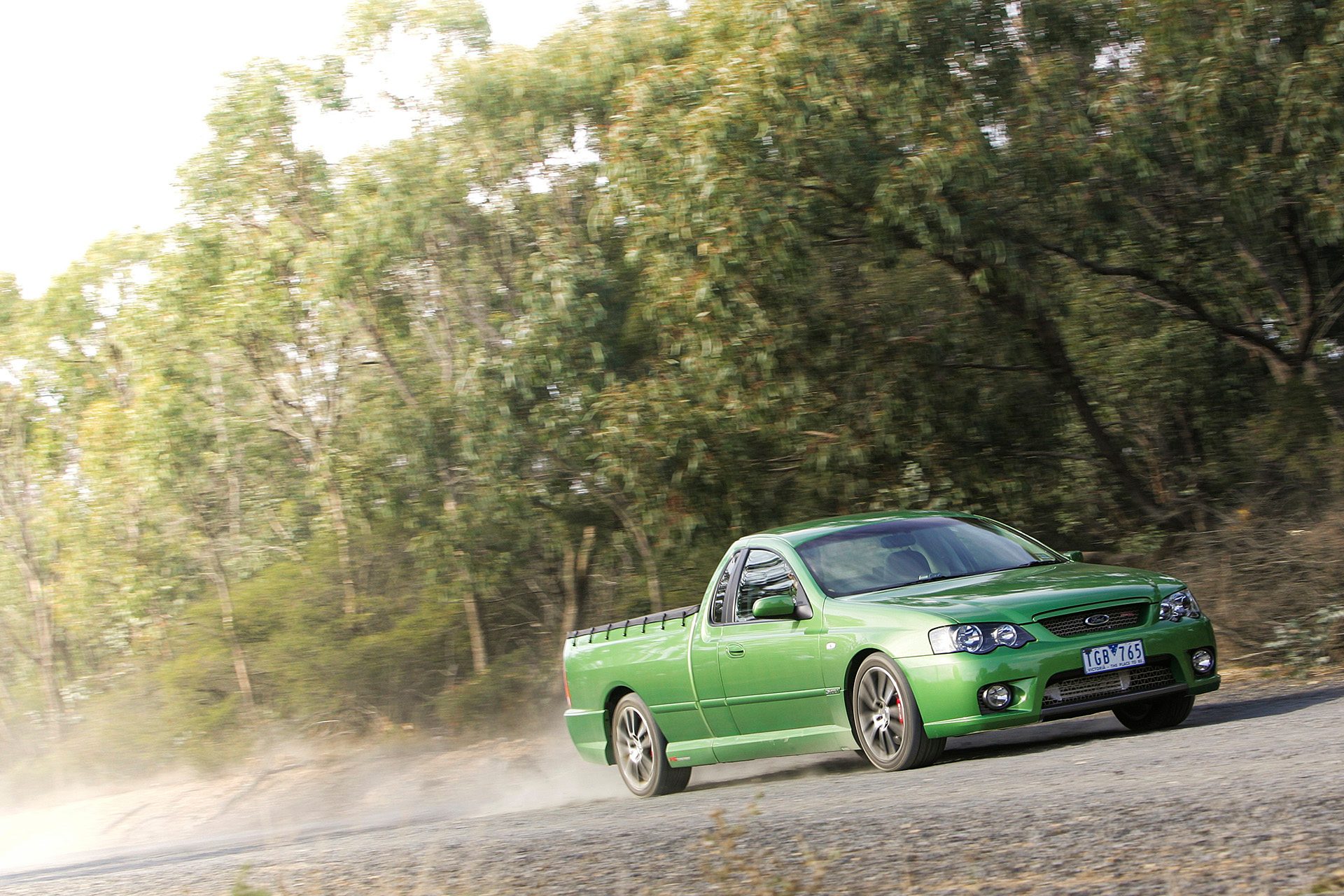
Just as well as it turned out, because once the Typhoon was released it quickly became apparent that there were problems. While NZ Autocar’s first drive went smoothly, both the Australian mags, Wheels and Motor, had cars succumb during road testing. Boiled down to its most simplistic explanation, a $0.50 star-shaped clip in the clutch pack tended to fracture causing clutch drag and difficulty selecting gears at rest or low speeds. Although FPV initially tried to blame road-testing methods employed by the magazines, it soon became apparent there was actually a design issue. Production of the Typhoon stopped in January, all existing owners were offered a temporary replacement car, and anyone on the waiting list was told they would have to wait a bit longer. All this, of course, meant the launch of the Tornado was delayed as well.
The problem was eventually sheeted home to the unique harmonics of the inline six compared to the usual V-engined applications. But how the problem got through the Ford and FPV quality and testing process is yet to be explained – publicly at least. Nevertheless, FPV says it is now fixed, thanks to a massive effort that included the global resources of Ford, (its FPV partner) Prodrive and AP, 7300 man hours of engineering time and the endurance testing of 18 F6s for more than 100,000km.
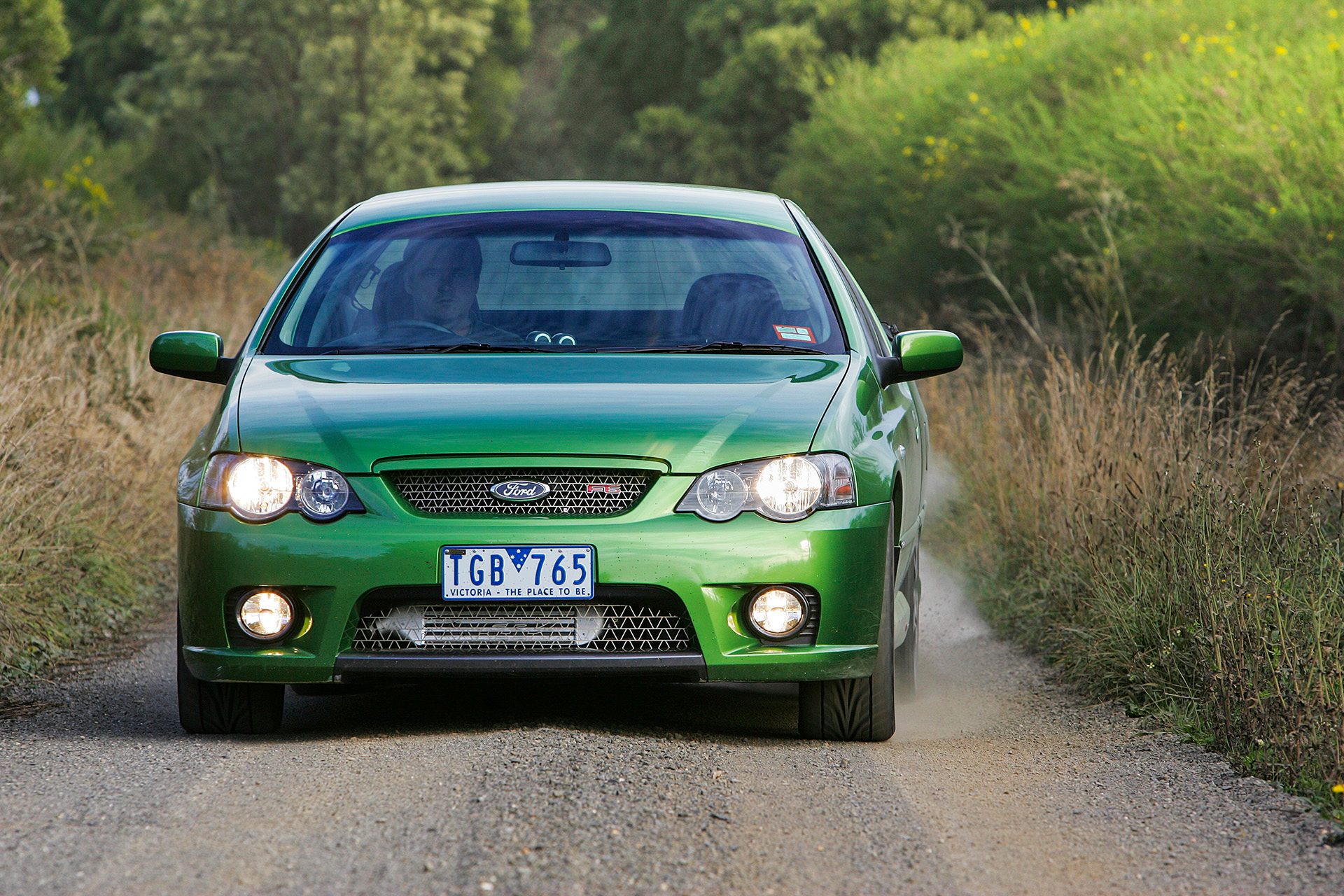
At the same time as it renovated the clutch, FPV also recalibrated the engine management system so performance was maintained under extreme conditions like hot weather and race-track work. It also smoothed the power and torque curves at very high revs to make the delivery more linear.
After all that, Typhoon went back on sale in Australia in May, with Tornado launched at the same time. In NZ, the Typhoon arrived in showrooms mid-June, priced at $69,990. Tornado is a special order for $62,490. The price discount has to take into account more than just the loss of three seats, two doors and half the roof. Tornado is also denuded of the sedan’s far more sophisticated Control Blade multilink rear suspension, instead making do with the same live axle and leaf springs that underpin the back-end of every Falcon ute.
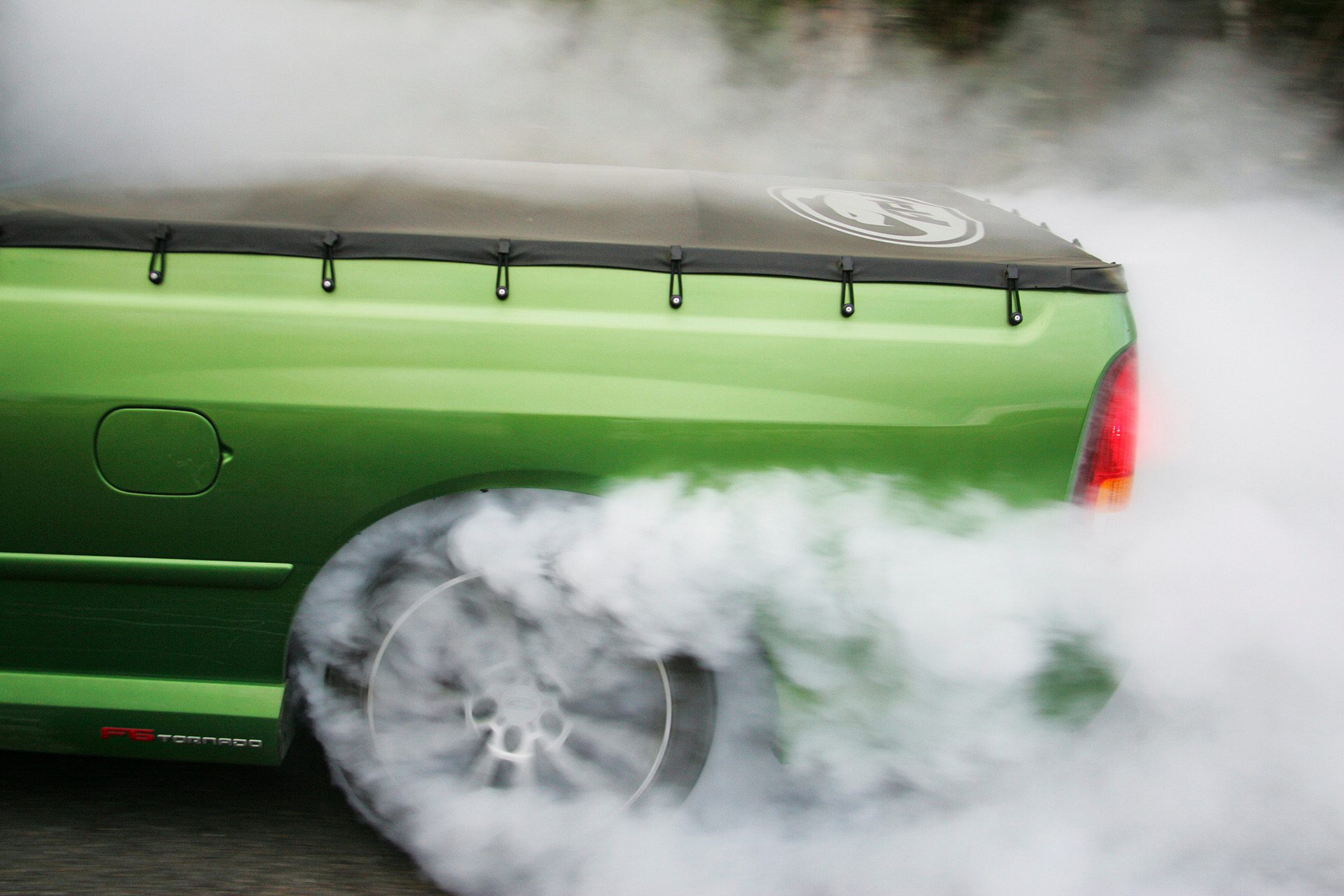
And if that’s got you thinking, then consider that traction control also disappears – again because the donor Falcon ute doesn’t get it. Interesting to note that Holden and HSV went to the expense of installing the control link rear suspension in the Z Series Maloo ute and adapted traction control to go with it.
Despite the primitive rear-end and the evidence provided by Tom’s pics, the lowered and firmed sports suspension – which comes straight from the XR6 Turbo – makes for a far more controllable and accessible device than you might have believed possible. It even rides with some subtlety.
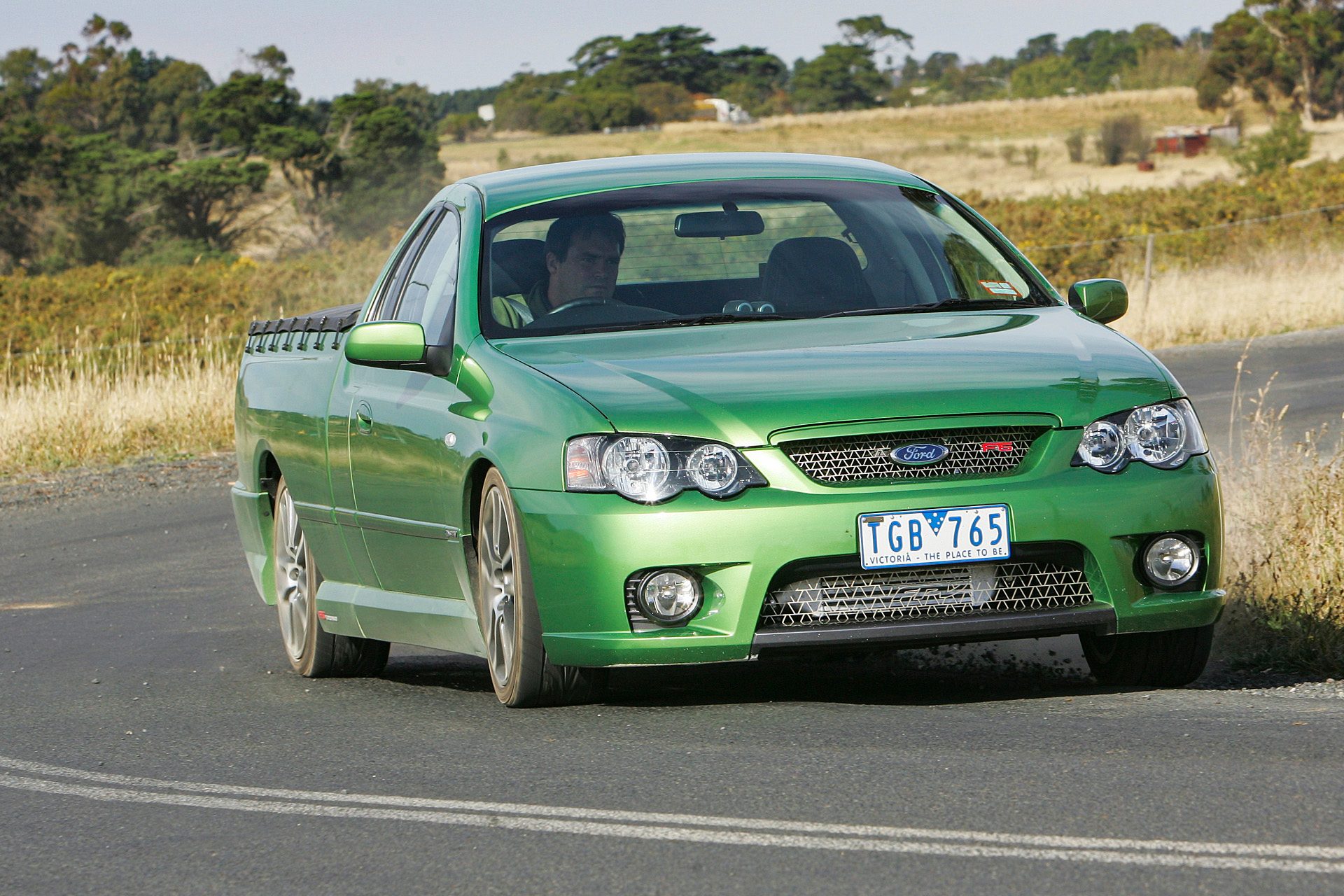
A blast across one of Victoria’s best back roads on the launch was convincing enough. But chuck in the added challenge of a layer of loose, sandy gravel atop a freshly rolled bitumen layer and there was plenty of opportunity for the Tornado to misbehave. But no, the grip level proved to be excellent, the ultra-long 3095mm wheelbase resists the temptation to sway and swing unpredictably, a limited-slip differential keeps power distribution on an even keel, and the whole package is capped off by bitumen-sucking 245/40 ZR18 Dunlop SP Sport 9000 tyres and superb Brembo brakes that are optional – but recommended (even at a budget-busting $7500, ouch!).
Now, all that doesn’t mean the Tornado can’t be provoked into slideways action – far from it. It’s just that you have a choice; it communicates before letting go. Which is nice. Mind you, if the road is wet, the level of provocation required dips markedly.
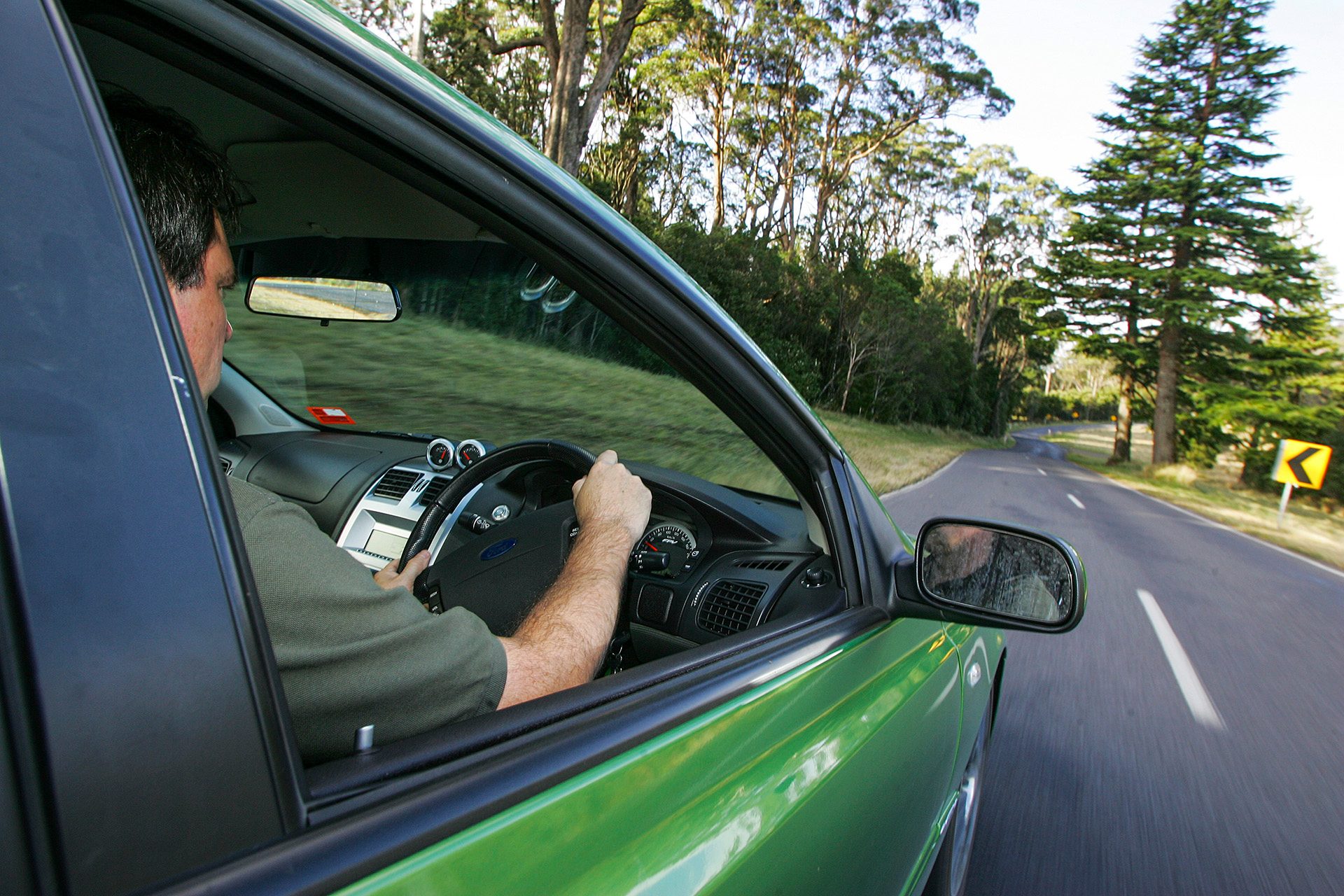
With its excellent double-wishbone front suspension, the Tornado feels understandably more secure up front. Combine that with light and direct steering and so much car trailing along behind, and it’s no wonder it feels nosey to drive, like the cockpit’s up near the grille somewhere.
Speaking of the cockpit, move inside and more reasons for the lower price than Typhoon become apparent. The TFT colour screen has gone from the centre stack and the standard equipment list is OK rather than great: dual airbags, ABS with EBD, a six-stacker CD player, air-conditioning, and a suede and metal-look cloth trim are the highlights.
Have a wander round the outside and there’s potential for disappointment as well. Yes, styling is in the eye of the beholder, but the Tornado seems a bit understated – just like the Typhoon – with naff wheels and a low-key body-kit. It doesn’t even get a hard tonneau cover. The Maloo does a much better job of looking the part.
There are other gripes. Like the silly start button, ‘opera windows’ that are hard to see let alone see out of (a general Falcon-ute design fault), the immediate lack of an auto option (one is coming down the track), the limited in-cabin stowage space (better than its Holden/HSV rivals though) and payload of barely half a tonne (although who really cares?). From the driver’s seat, there’s never any forgetting this is a pretty rudimentary vehicle, with driveline whine, vibrations, creaks, groans, shrapnel rattling under the guards and driveline snatch when inching through clogged city traffic.
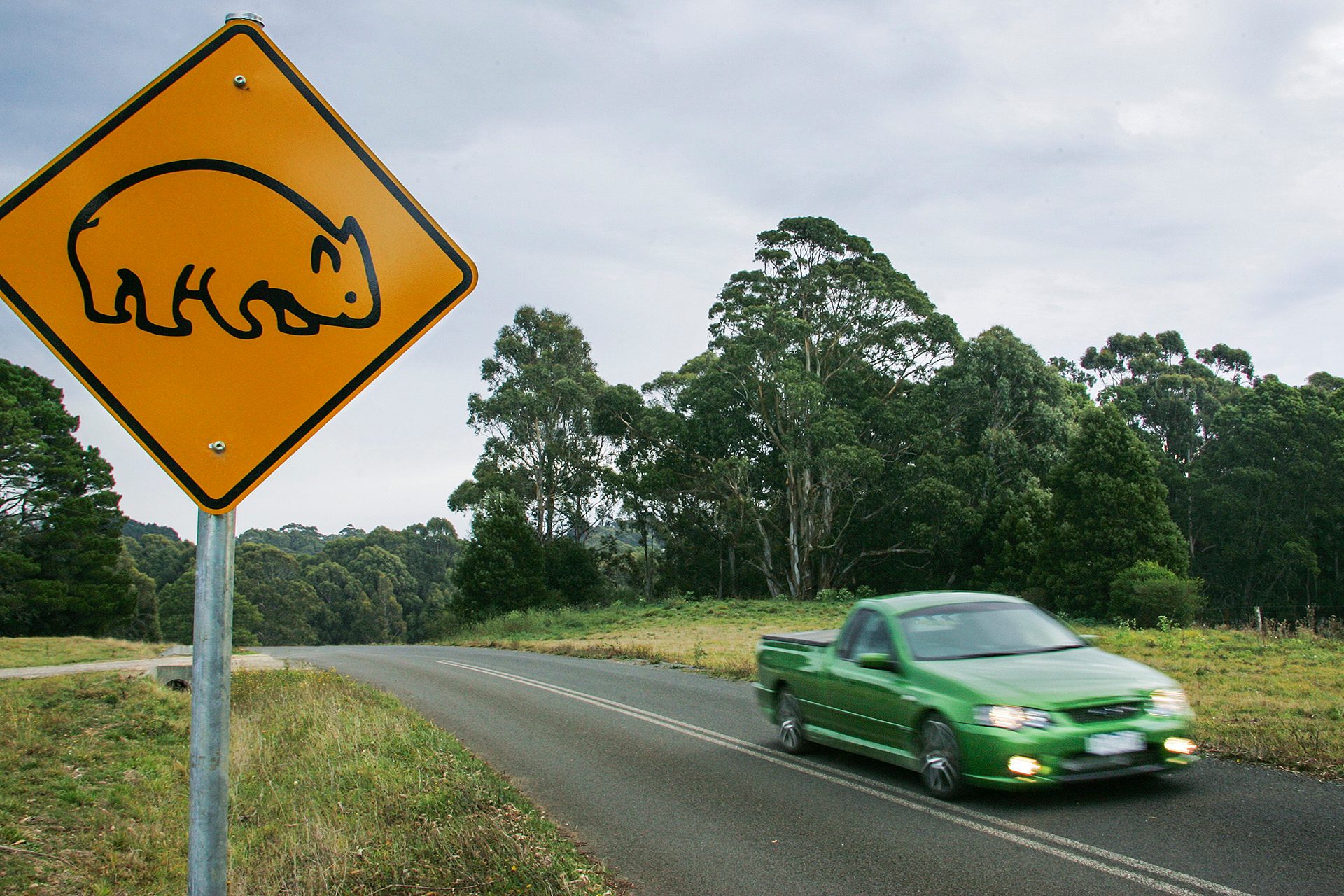
What keeps you coming back is that engine. While it’s perhaps the slightest bit blunted by the Tornado’s extra 40kg kerb weight, the EMS recalibration, or just familiarity killing off the shock off the new, it still has the same traits: it’s a bit of a challenge to launch, but brilliant once you’re on a roll past 2000rpm and the turbo has spooled up. The sheer wave of torque takes over and you surf along, revelling in the lag-less response and rocket-sled launches off corners. At the strip, a Z Series would be quicker, but on the open road, mixing ups, downs, kinks, corners and hairpins, the Tornado is right in the game, compressing your lungs and blurring the scenery each time the throttle opens. Only a grumpy and uninspiring exhaust note lets down one of the greats.
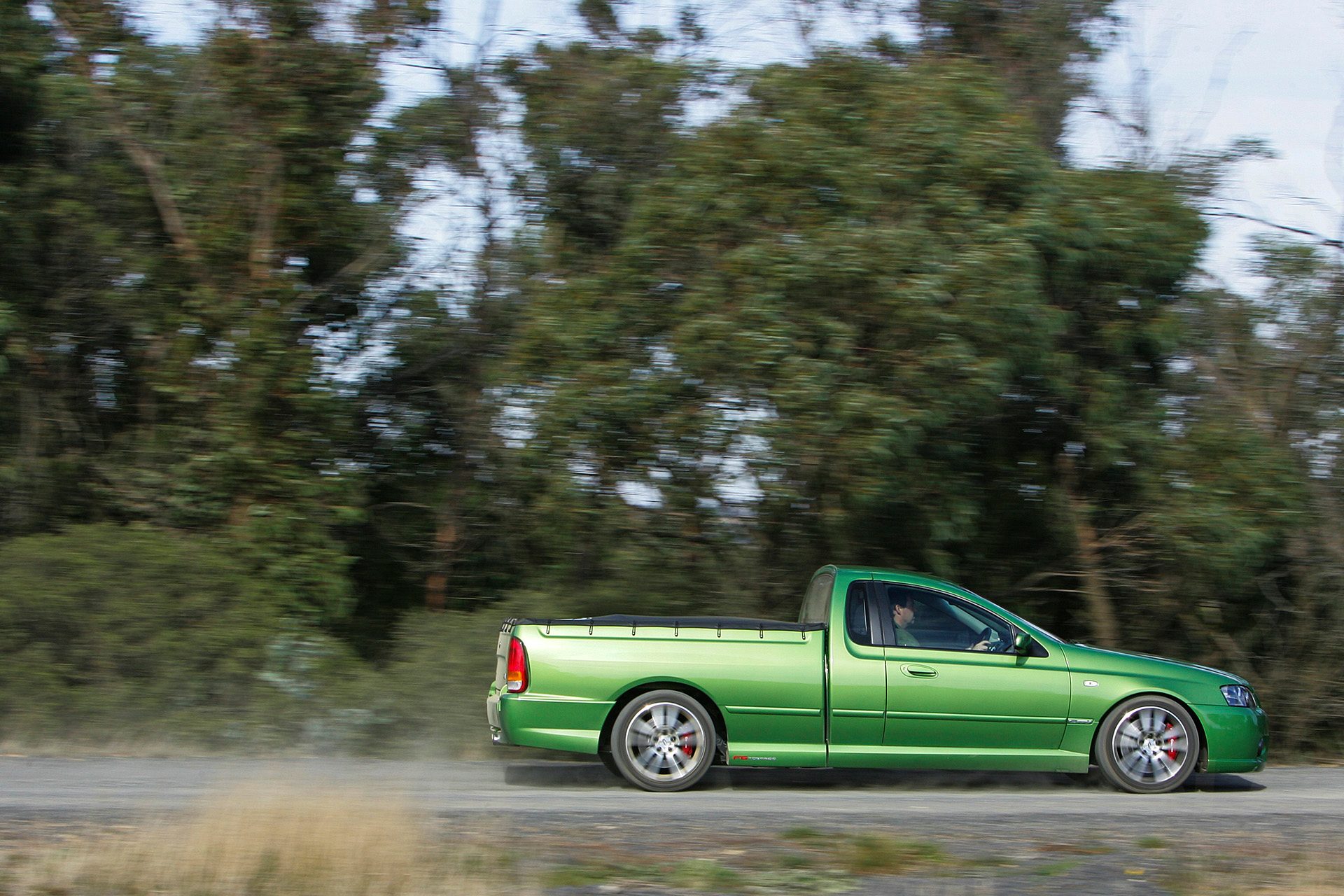
The irony is that all this grunt ensures the gearbox and clutch become largely superfluous. Top gear on the highway for economic use of PULP, third or fourth in all but the tightest of twisties. Literally set and forget.
That’s a good thing because while this is an above-average example of the Tremec genre, it still isn’t up there with the great manual gearboxes of the world thanks to a short but familiarly crunchy change.
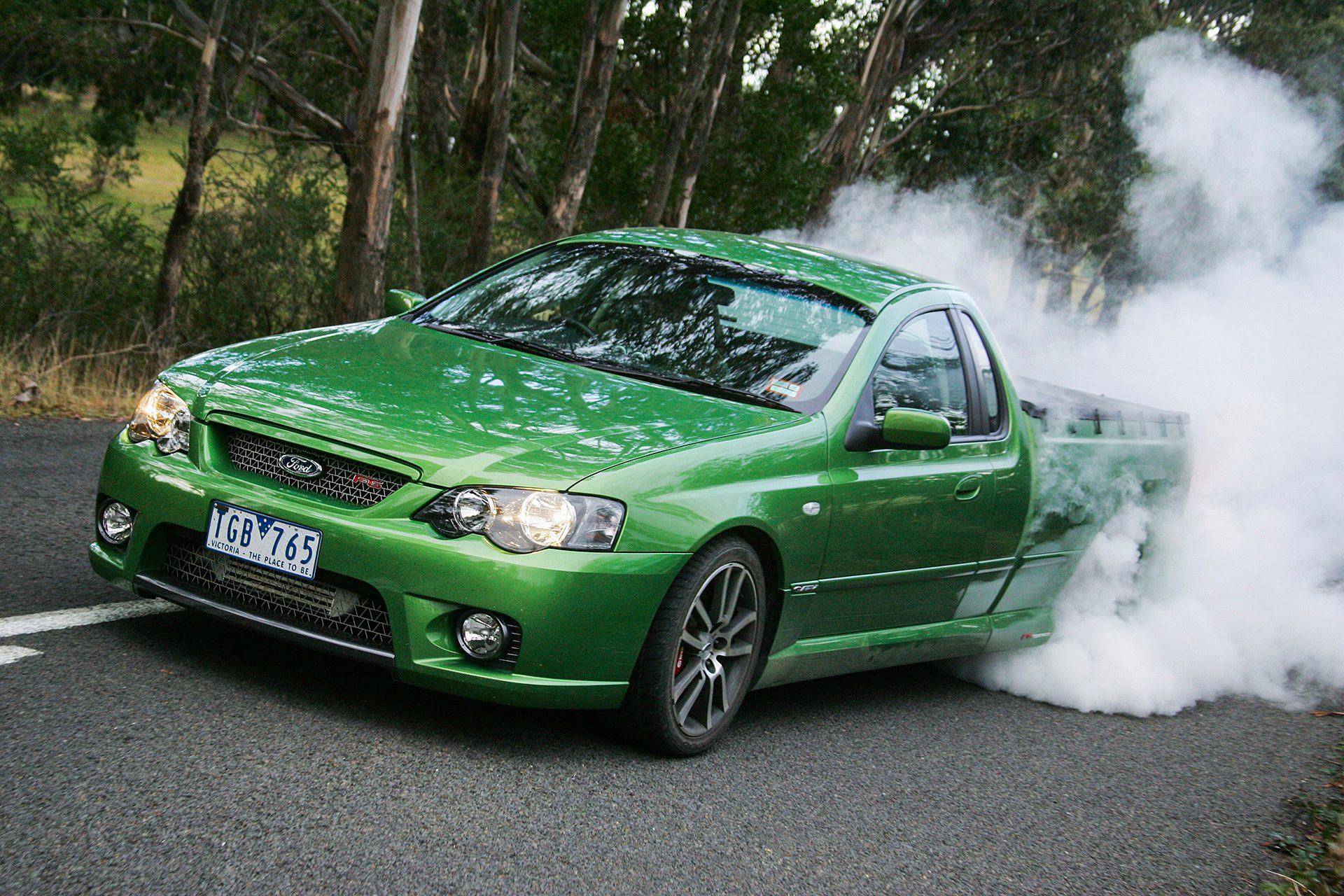
And that troublesome clutch? Feels heavier than before and also longer in its engagement, the pedal nearly out before the second plate hooks up. It can lead to some clutch drag if you’re not careful. Yet it stayed intact no matter what we threw at it – which as you can see was quite a bit. But that’s nothing more than Tornado will cop in real life, so it needs to stand up for itself.
Maybe some ute lovers will be turned off because it doesn’t have enough cylinders or capacity. That will be their loss. The Tornado is a different beast for sure, but with that engine up front and tyre smoke billowing out back she’s still an absolute bewdy, mate.
| Model | FPV F6 Tornado |
| Price | $62,490 |
| Engine | 3984cc, IL6, T |
| Power | 270kW/550Nm |
| Drivetrain | 6-speed auto, RWD |
| 0-100km/h | 6.50sec (claimed) |
| Weight | 1827kg (claimed) |
This article first appeared in the July 2005 issue of NZ Autocar Magazine.


